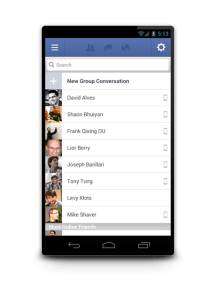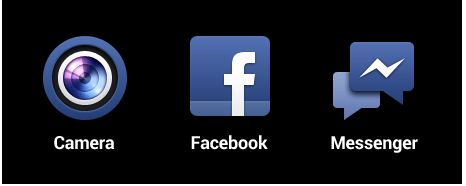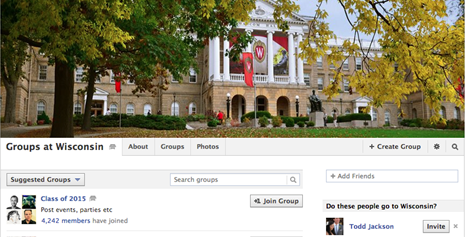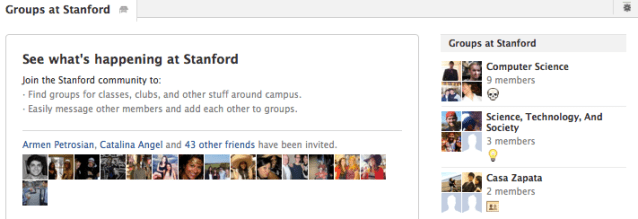 (Credit:
Photo by: Jason Hiner/CNET)
(Credit:
Photo by: Jason Hiner/CNET)
Motorola Mobility CEO Sanjay Jha pulled off one of the most difficult
things to do in the technology industry: He surprised people at a press
conference.
When Jha took the stage at the Consumer Electronics Show 2011 and
revealed the Motorola Atrix smartphone and the "Lapdock" that made it
act like a laptop computer, it sent reporters scrambling. They expected
the unveiling of the Motorola Xoom, the highly anticipated and
already-leaked first official
Android
tablet to take on the
Apple iPad. But, it was the Atrix and the Lapdock that stole the show.
Was this a hybrid smartphone/PC, the veritable missing link of computing? If so, how did it work?
The
key was Motorola's homegrown software called "Webtop" that made the
Atrix act like a computer once it was docked. When Webtop launched with
the Atrix two months later, the obvious question was how Motorola beat
platform giants Microsoft and Apple to the converged smartphone-PC
device?
The answer is complicated but fascinating, and on the eve
of Motorola Mobility's merger with Google, it leaves the combined
companies in an enviable position. The success of Android has
established Google as a key player in mobile computing devices, and once
consumers and business users start looking to consolidate their many
devices, Webtop could make Google the company that's best positioned to
make that consolidation possible.
CNET and its sister site
TechRepublic interviewed current and former Motorola and Google
employees as well as industry experts to explain how Webtop emerged from
a brainstorming session to become, potentially, a major weapon in the
fight for dominance in the next generation of computing platforms. What
emerged from our reporting is a clear picture of a technology that
disappointed initially but may be about to spring into the mainstream.
The
idea of using a phone as a fully functional computer has been around
for more than a decade, of course. In the late 1990s, former Microsoft
CEO Bill Gates often said a phone would eventually replace the big PC
towers. More recently,
Apple CEO Steve Jobs declared the arrival of the "Post-PC" era in 2010, as the iPad's surprising popularity began to erode overall PC sales.
Still,
neither Microsoft nor Apple have made the leap to using their
smartphones as PC replacements. That gives Motorola/Google a lot of
running room as it waits for final regulatory approval from China.
The Secret Weapon
Webtop
started in mid-2009 with a handful of engineers in Motorola's
Sunnyvale, Calif., lab thinking about how they could get past the
frustration of the mobile Web browsing experience.
"There are Web
sites that simply don't work without a mouse," said Sean Chau,
Motorola's chief software engineer. He and his engineers wanted to make
that exasperating mobile experience a thing of the past. "It was just a
few folks getting together and saying, 'What can we do?'"
Once
they settled on a rough concept of a dockable phone with a desktop
environment and a full Web browser embedded inside, Chau's team quickly
"hacked something together."
Great idea. But the fate of the
project hung on whether Chau could sell it to their CEO, Jha. First,
Chau sent Jha video clips that showed the user experience for Webtop on
very early prototypes. Then he explained in phone conversations that
Webtop was meant to give a docked smartphone the "full Firefox browser
including download and upload support, full Adobe Flash for desktop, and
multi-window multitasking," said Chau. "At a high level, the key
positioning was maximizing the user experience of your cell phone with a
keyboard, mouse, and large screen."
Finally, Chau met with Jha
and presented him with working prototypes. He showed how right-click,
copy-and-paste, the scroll wheel, and window resizing all worked in
Webtop just like they did on a PC.
Jha connected with the concept. "The moment he saw those demos, he wanted to go for it," Chau said.
Webtop
would later be tied to the Atrix smartphone since the two products
arrived in the market at the same time. But at that point, "We were
working on Webtop before an Atrix ever existed," Chau said.

From the Motorola press conference at CES 2011,
this photo shows the Atrix in a desktop dock with Webtop running on a
standard monitor.
(Credit:
Jason Hiner/CNET)
Just as Webtop was starting to take shape at Motorola at the
end of 2009, AT&T sent out a confidential RFP to its smartphone
hardware partners asking them to submit their best concepts for a
"game-changing" Android device.
It was a proverbial "pivot"
moment for AT&T. It wasn't offering any Android phones and its
exclusive agreement with Apple for the iPhone was going to end in
December 2010. What's more, AT&T's Windows Mobile and BlackBerry
devices were running out of steam and it needed something it could put a
lot of promotion behind. On Motorola's side, it had just launched the
original Droid in partnership with Verizon. The Droid was the first
Android 2.0 device and it was already a hot seller. The rest of the
wireless industry suddenly wanted in on Android.
The match made
sense. Motorola and AT&T execs had a private meeting in Las Vegas at
CES 2010, where Motorola showed off its idea for a new device
codenamed "Evora." AT&T
liked what it saw and over the next two months the two companies went
back and forth on details. In time, Motorola introduced the idea of
adding something new to Evora called "Virgil" (the codename for Webtop).
The Motorola team was excited about Virgil, but AT&T executives?
Not so much.
It was time for another Chau demo. This time he had
to convince AT&T CEO Ralph de la Vega. Chau flew to AT&T
headquarters in Atlanta and went through his Webtop dog-and-pony show.
The AT&T chief was hooked. "We've got to have this," Chau recounted
de la Vega saying. "Webtop is something best experienced," Chau added.
"It's hard to describe over the phone or even in slides. We did much
better in person showing working prototypes."
Once AT&T was on board with the "Virgil" concept, the stage was set for the Atrix to become a spotlight-grabber.
By
March 2010, Sprint and HTC were hogging the Android headlines at CTIA
Wireless 2010 with the new HTC EVO phone and AT&T and Motorola
needed an awnser. The Atrix was fast-tracked. A top phone launch usually
has a lead time of 12-18 months in order to line up marketing and
finish product development. The Atrix was shortened to about six months
to get it ready for the holiday season. For the Webtop team, that meant
dropping everything on their long-term development of the OS and
focusing on getting the software to work on this one phone.
There
were snags. One of the biggest was RAM. It turned out the phone was
going to need way more RAM than even the most high-end smartphones in
order to load Webtop alongside Android. Chau's team had to appeal to CEO
Jha to get it.
"Without Sanjay's push, we wouldn't have gotten
the RAM we needed," said Chau. "It's not cheap. We needed that kind of
financial and organizational support."
Jha also had to provide
the funding and executive backing for the special laptop docking device
that the team was developing. It was going to be slim and slick, but it
was going to be expensive to produce and it would have to be priced
fairly high. But, the Motorola team thought that it would generate far
more buzz than just a glorified desktop dock that attached to a monitor,
mouse, and keyboard. There were already phones that were starting to
connect to HDTVs (including the EVO). Jha agreed.
"Sanjay really pushed on the Lapdock," Chau said.
All
the pushing worked. By the fall, the device moved into the testing
stage and AT&T invited 10 CIOs from Fortune 500 companies to get a
demo of the Atrix and Webtop. The consensus: You've got a winner if you
integrate
Citrix, an enterprise
technology that allows companies to host desktop apps like Microsoft
Office on servers and users simply connect to those servers and then run
the apps from there.
Around the same time Citrix came up at the
CIO pow-wow, AT&T told Motorola that it wanted to change the new
device to add chips for HSPA+, its speed-boosting 3G service (
AT&T would later spin it as 4G). This was a response to Verizon, which was about to launch LTE, a true 4G service.
The
thinking was that if AT&T's flagship Android device went to market
without the fastest wireless chips, customers wouldn't think it as a
high-end device. AT&T and Motorola had a decision to make: Launch in
time for the holiday season or delay the product to add Citrix and
HSPA+? They bet on the two big additions and pushed the launch back to
CES 2011 in January.
The launch was a success. Webtop caught the
entire tech industry by surprise. Competitors didn't have anything like
it. Both CNET and Engadget named the Atrix the "Best of CES" in
smartphones.
My headline at the time was:
Breakthrough device of CES: Motorola Atrix = Phone + PC

The Motorola Atrix and the original Lapdock were unveiled at this January 2011 press conference at CES.
(Credit:
Jason Hiner/CNET)
The problem with Webtop
There was a hitch: The first version of Webtop was awful.
But,
it was awful in the same way that Android 1.0 was awful. It was awful
in the way the original MacBook Air was awful. You didn't want to use it
right away, but once you tried it, you had a feeling that it was
bursting with promise, and a sense of inevitability.
Unfortunately,
Webtop could be so slow that it was practically unusable if you wanted
to work with it for more than about an hour. It could lag at doing
simple tasks like launching the Web browser or opening the Android app
window that allowed you to use your mobile apps from within Webtop. Even
though the Atrix was the first major smartphone to sport 1GB of RAM, it
still felt unbearably sluggish in Webtop mode. Ultimately, Webtop was
1.0 software and it felt like 1.0 software.
Still, plenty of
corporate customers decided to run trials. A year later, Motorola
reports the number of companies testing Webtop devices has grown
significantly, but none of these companies are willing to talk about it.
(That's never a good sign.) While neither AT&T nor Motorola will
release numbers on the sales of the original Atrix, it's safe to call it
a disappointment. It generated tremendous buzz and got a lot of
positive reviews from the tech press. But that was a grade on a curve,
based more on potential than the device itself.
Nonetheless, as
Google nears finalizing its acquisition of Motorola, the tide may be
turning on sales of Webtop devices, and that could set up a huge
opportunity for Google and Android to use Webtop to launch a full
frontal attack on Apple and Microsoft.
What will Google do?
Webtop
recently has made several big strides. After the tepid reception of the
Atrix, Motorola launched Webtop on several other devices on multiple
carriers during 2011: The Photon (Sprint), the Droid Bionic (Verizon),
and the Atrix 2 (AT&T). Then, at the end of the 2011, Motorola
quietly rolled out Webtop 2.0, tucked into the Motorola Droid Razr, a stylish, high-end LTE phone on Verizon.
Webtop 2.0 had several key improvements:
- An updated version of Firefox.
- Offline syncing for Google docs.
- Webtop's App Bar became customizable.
- Added the ability to see the battery life of both the phone and the dock simultaneously.
- Improved the management of phone and dock charging.
- Added VGA video-out capability (the common port used to connect to conference room projectors and many computer monitors).
- Added support for more PC expansion ports.

This screenshot of Webtop 2.0 shows the Mobile
View app, which is used to access all of the phone's apps and settings
while it is docked.
(Credit:
Jason Hiner/CNET)
After launching the updated version of the Webtop software in
the Razr, Motorola unveiled a new version of the dock called the Lapdock
500 Pro that sported a 14-inch screen, a Web cam, a VGA video port, SD
card slot, Ethernet jack, headphone jack, and even a set of Android
shortcut keys on the keyboard. This made Webtop + Lapdock a much more
viable PC replacement.
While the original Lapdock was thin,
slick, and brushed metallic, the Lapdock 500 Pro had a more utilitarian
look in the mode of a MacBook Pro or a business-class HP laptop. Most
importantly, Motorola finally got the price right. The original Lapdock
was $499. Motorola sells the Lapdock 500 for $349, but the price at
Amazon and other retailers is $249. Verizon regularly runs specials
where sells it for $149 when a customer buys it with a Motorola
smartphone.
While AT&T eventually cooled on Webtop and the
Lapdock after the disappointing sales of the Atrix and Atrix 2, Verizon,
perhaps a better fit because of its Verizon Business division, carried
on.
Verizon also looks at Webtop and the Lapdock as more than
just an enterprise product. The carrier thinks it could be a tool for
consumer technophiles and individual business professionals. In
February, Verizon put a lot of promotion behind Webtop and the Lapdock
by giving them a prominent spot in its
Droid Razr commercials.
Verizon
declined to comment on the sales numbers of its Webtop-powered phones
or the Webtop accessories, but everyone I've spoken with at Verizon has
been very familiar with the Lapdock and generally upbeat about it.
In
March, I spoke with a sales representative at one of Verizon's large
retail locations and asked if they were carrying the LapDock 500. He
said the store was selling it, but since the new commercials started
running the store was having a hard time keeping them in stock. However,
smaller Verizon stores that I called said that they only sold the
Lapdock 500 as a phone order item and didn't have any in stock.
Michelle
Gilbert, public relations manager at Verizon Wireless, said, "We tend
to see more business customers who travel a lot purchasing the LapDock
500 Pro."

He also said that there's no virtualization involved. The
bottom line: It would be relatively straightforward for Google to
integrate Webtop into the native Android code without complicated
software engineering. And, by the time Google would pull this off in the
next major release of Android, dual core hardware will be standard on
virtually all smartphones (with quad core on high-end smartphones),
providing the power Webtop needs to run smoothly.
There's another x-factor:
Google's ChromeOS. ChromeOS and Webtop are very similar animals. If you look at Google's
Chromebooks and
Motorola's Webtop + Lapdock, you see browser-centric operating systems
based on Linux. It's all about giving users a fast, slimmed-down laptop
experience. It lets you get on the Internet and access all of your Web
apps and services in a traditional computer browser with a mouse and
keyboard, but without all of the extra overhead and distraction of a
full operating system like Windows or Mac.
Chromebooks have never taken off,
of course, and from a technical standpoint ChromeOS and Android have no
connection or integration. That's where Webtop comes in. Webtop could
become the bridge between Android and ChromeOS. Google could merge the
Webtop and ChromeOS teams, take the best of both of code bases -- the
speed of ChromeOS and the fuller experience of Webtop -- and emerge with
an empowered version of ChromeOS that is now integrated into Android.
In
the smartphone war against Apple, this would give Android a feature the
iPhone likely will not have any time soon. Appealing to consumers?
Maybe. Many of them could replace an ailing old Windows PC with a
dockable Android smartphone.
Appealing to business customers?
Absolutely. Most companies are moving business apps to either the cloud
or private browser-based apps. Webtop-enabled Android devices -- if they
are well-orchestrated -- could take a big bite out of the corporate
sales of Windows.
But it's no slam dunk. The fragmentation of
Android and the fiasco of Android updates has shown that Google is not
yet a master of working with hardware partners, and adding the
complexity of a dual-purpose device will demand even stronger leadership
from Google. It's going to have to get tougher and more persuasive with
hardware makers.
There's also the question of convincing
hardware partners -- many of whom would be cannibalizing sales of their
own Windows PCs -- to get on board with this converged strategy. The
best argument that Google will be able to make will be that the hardware
makers can replace low-margin PC sales with high-margin mobile
accessory sales (docks).
Perhaps the biggest problem is Webtop brain drain. In February, Webtop's biggest champion, Seang Chau, left Motorola just as
U.S. and EU regulators were approving the Google deal.
Chau jumped to Microsoft to lead the mobile division of Skype. While
Sarah Gaeta, Motorola's director of product management for Webtop, said
no one else has left the Webtop team, the loss of Chau was a body blow.
Google
is still unwilling to talk about the trajectory of Webtop and how it
could shape the future strategy of ChromeOS. But last Fall when Google
announced that it was buying Motorola, it said, "The acquisition of
Motorola Mobility, a dedicated Android partner, will enable Google to
supercharge the Android ecosystem."
We're about to see how much they really mean it.






.png)
.png)
.png)
.png )













 The “how” is the interesting part. Well, interesting to nerds like me, at least. All this improvement is happening because Intel now shrinks down its manufacturing process to 22 nanometers. You see, Intel operates on what’s known as a “tick-tock” cycle. At the “tick” in the cycle, Intel introduces a new fabrication process. Last time, it was “Clarkdale” processors reducing Nehalem processors to 32 nanometers back in 2010. Well, it’s time for the next “tick.”
The “how” is the interesting part. Well, interesting to nerds like me, at least. All this improvement is happening because Intel now shrinks down its manufacturing process to 22 nanometers. You see, Intel operates on what’s known as a “tick-tock” cycle. At the “tick” in the cycle, Intel introduces a new fabrication process. Last time, it was “Clarkdale” processors reducing Nehalem processors to 32 nanometers back in 2010. Well, it’s time for the next “tick.” Something that really matters to me though, is the upgraded graphics on-board the motherboard. We’re talking DirectX 11 support with Intel integrated graphics. That is a big deal. It means that while discrete GPUs will remain king, you’ll be able to find svelte systems (even small laptops) that could potentially keep better pace. Translation: GAMES ON SMALL PCs! OK, personal biases aside, that extra horsepower will mean more machines can edit video – or stream 1080p content (and did I mention, “play games?”) with ease. An old buddy of mine over at Intel was also quick to point out that Quick Sync Video 2.0 is especially handy. It allows mainstream users to work with video much more easily. (Way faster video encoding / decoding.
Something that really matters to me though, is the upgraded graphics on-board the motherboard. We’re talking DirectX 11 support with Intel integrated graphics. That is a big deal. It means that while discrete GPUs will remain king, you’ll be able to find svelte systems (even small laptops) that could potentially keep better pace. Translation: GAMES ON SMALL PCs! OK, personal biases aside, that extra horsepower will mean more machines can edit video – or stream 1080p content (and did I mention, “play games?”) with ease. An old buddy of mine over at Intel was also quick to point out that Quick Sync Video 2.0 is especially handy. It allows mainstream users to work with video much more easily. (Way faster video encoding / decoding. 



















 He also said that there's no virtualization involved. The
bottom line: It would be relatively straightforward for Google to
integrate Webtop into the native Android code without complicated
software engineering. And, by the time Google would pull this off in the
next major release of Android, dual core hardware will be standard on
virtually all smartphones (with quad core on high-end smartphones),
providing the power Webtop needs to run smoothly.
He also said that there's no virtualization involved. The
bottom line: It would be relatively straightforward for Google to
integrate Webtop into the native Android code without complicated
software engineering. And, by the time Google would pull this off in the
next major release of Android, dual core hardware will be standard on
virtually all smartphones (with quad core on high-end smartphones),
providing the power Webtop needs to run smoothly.






